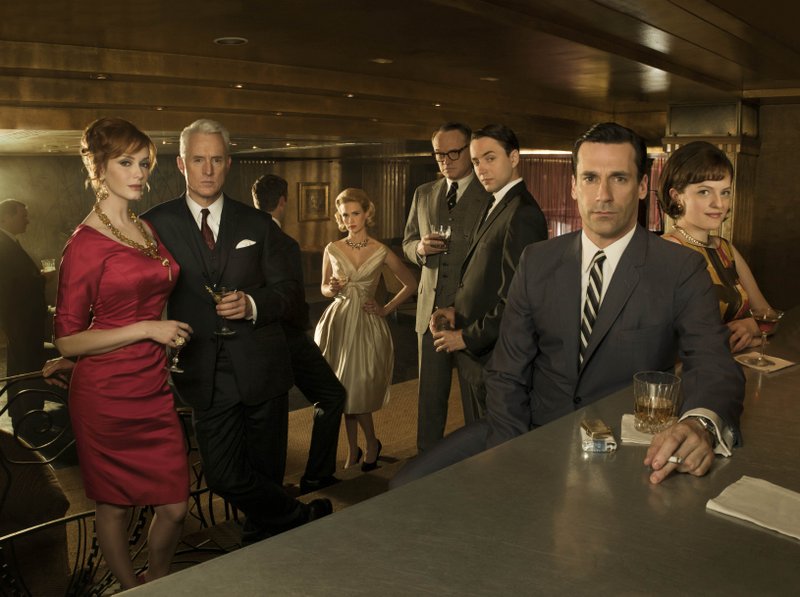 Photo: Frank Ockenfels/AMC
Photo: Frank Ockenfels/AMC
We love Mad Men and can’t get enough. In addition to the character development, plot twists and 1960s period costumes (which are totally back in style), we love seeing some of our favorite locations in New York City depicted on the show. From Madison Avenue to Waverly Place, many of the locales that Don and the rest of the characters frequented are still around and just as successful as they were in the ’60s. In anticipation of Season 6, here’s our Mad Men Guide to New York City with our favorite locations featured on Seasons 1-5. We can’t wait to see what’s in store in Sunday’s Season Premier, and add Season 6 locations to our Mad Men Guide.
The Oyster Bar at Grand Central
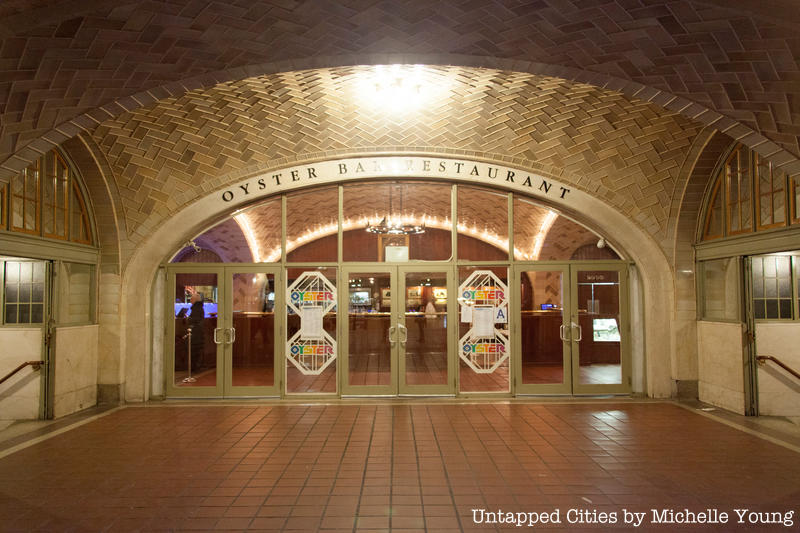
In Season 1, Don gets back at Roger for flirting with Betty by egging him on to eat a couple dozen oysters and drink one too many Martinis, and then having the elevator attendant say the elevator is out of service. By the time the two of them walk the twenty-three flights up to the office, Roger is so sick that he vomits at the feet of a client. We don’t recommend overdoing it like Roger, but we do recommend stopping at the Oyster Bar for a drink before boarding a train upstairs. In fact, for an even more sophisticated period atmosphere, head downstairs to the Campbell Apartment, Grand Central’s hidden bar, famous for the Prohibition Punch. We can only hope it will be featured in Season 6. Read more on our guide to NYC’s hidden bars.
P.J. Clarke’s
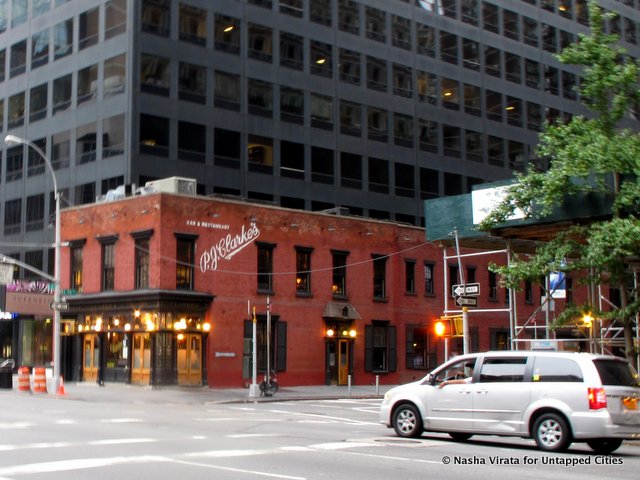
When Peggy successfully writes copy for the Belle Jolie campaign and gets promoted from secretary to copy writer, she invites everyone out for a drink at P.J. Clarke’s to celebrate. A New York City staple that has been around since 1884, the original P.J. Clarke’s on 55th and 3rd is still a popular spot for a happy hour drink and serves up a menu of all American classics. You can still see mementos of the bar’s past with a broken pay phone, human leg bones over the door (apparently an Irish good luck talisman), and Skippy the taxidermied dog. It was once a haunt of Frank Sinatra, Jackie O and Elizabeth Taylor. How’s that for authentic?
Henri Bendel
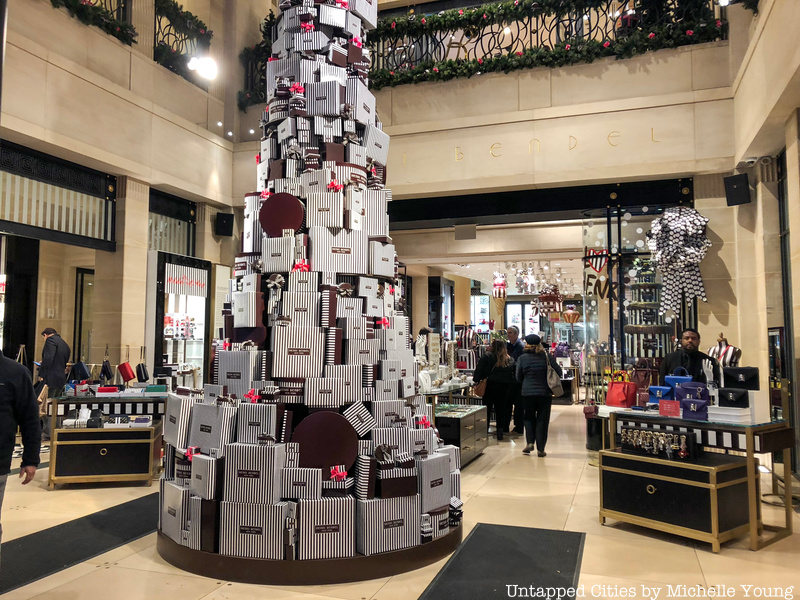
It’s been suggested that Menken’s Department Store from Season 1 may be a fictionalized version of Bergdorf Goodman, but we think it more closely resembles Henri Bendel. Menken’s is portrayed as a classy, upscale but intimate department store, much like Bendel. The flagship on Fifth Avenue is home to original Lalique windows, making it an architecturally interesting place to see even if you prefer not to shop there.
Sardi’s
In Season 3, Don meets his match in Bobbie Barrett, the wife and manager of the obnoxious comedian Jimmy Barrett, who insults the client’s wife at his commercial shoot. Though Jimmy is the famous one, Bobbie pulls all the strings. She’s fierce, knows what she wants to will use whatever means she has at her disposal to get it. In the midst of their affair, she tells Don, “I like being bad and then going home and being good,” a line he recalls in Season 5. She and Don meet at Sardi’s to celebrate Jimmy’s new television show, which is fitting as the restaurant is known as a favorite among the showbiz crowd. Sardi’s opened in 1927 and is best known for the hundreds of celebrity caricatures that line the walls. The artist Alex Gard actually painted those caricatures in exchange for a meal a day at the restaurant.
The Waldorf-Astoria

In Season 3, Don makes the acquaintance of a man named Connie while avoiding Roger and Jane at their country club. Three episodes later, we find out that Connie is Conrad Hilton. Mr. Hilton asks Don to meet him in the Presidential suite at the Waldorf-Astoria, and when a pleasantly surprised Don enters, Hilton says, “Food? Best kitchen in the world—got a salad named after it.” In reality, the Waldorf-Astoria started as two hotels built by William Waldorf Astor and his cousin John Jacob Astor IV in the 1890s. Conrad Hilton bought the hotel in 1949. The Waldorf-Astoria is credited with transforming the role of hotels from resting places for transient people to prestigious social centers as well as advancing women’s rights, since they were allowed to stay there without an escort. It was the first hotel to offer room service. It’s also known for hosting many famous people, including Franklin Delano Roosevelt, who entered via Track 61, the Waldorf-Astoria track under Grand Central.
The Pierre
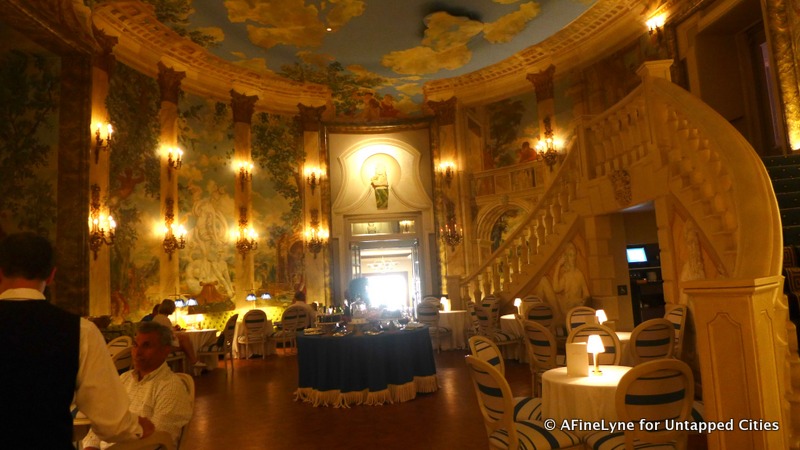
Season 3 ends with a bang as Don, Roger and Cooper stage a coup and convince Lane to sever their contracts rather than letting them be sold out by PPL. As the partners enlist a few key people to come with them, they call Joan back to help them clear out all the important files and decamp to a suite in the Pierre, which becomes the temporary headquarters of the new agency Sterling Cooper Draper Pryce. Now under Taj’s umbrella, the Pierre was opened in 1930 by Italian immigrant Charles Pierre Casalasco, whose father owned the Hotel Anglais in Monte Carlo. Before opening the hotel, Pierre rubbed elbows with J.P. Morgan, the Vanderbilts and the Astors. Pierre couldn’t withstand the effects of the Great Depression, however, and the hotel was sold at public auction in 1933. By the time Don and company decamped there, the hotel had been bought by John Paul Getty and turned into a cooperative with 75 apartments sold to private residents, including Elizabeth Taylor. The Pierre was the first hotel to have a radio and television installed in each guest room.
Benihana
When Sterling Cooper Draper Pryce has a chance to win Honda’s business, Don decides to study up on Japanese culture and takes Bethany Van Nyes out to a fancy dinner at Benihana, where they run into Don’s rival, Ted Chaough. The now famed Japanese restaurant was founded in 1964 by Hiroaki Aoki, who wanted to bring hibachi-style dining to America. Benihana originally had only four communal tables, and chefs prepared diners’ food right in front of them with knife-wielding skills and theatrical flair. Business started slow, and Aoki was scraping to get by until a rave review in the New York Herald Tribune changed the fate of this little restaurant and transformed it into a top destination for New Yorkers and celebrities like the Beatles and Muhammed Ali.
New York Athletic Club
Season 4 is rough for Don. Betty has divorced him and he is alone for the first time. Yet there is a beautiful cinematic moment at the beginning of Episode 8 “The Summer Man” where we see Don standing outside the New York Athletic Club smoking a cigarette and watching the passersby. Don swims often to clear his head. Today businessmen and entrepreneurs can still enjoy the use of the New York Athletic Club’s swimming pool, a rare commodity in the city. The club has preserved some of its well-heeled traditions, including a dress code. Whether or not we’d want to take a swim there like Don, the New York Athletic Club is on our to visit list.
Minetta Tavern
When Abe asks Peggy to meet him for dinner at Minetta Tavern and won’t take no for an answer, Peggy fears the worst and goes to Joan for advice. Joan wisely reassures her that men don’t take the time to end things, and it’s more likely that Abe is planning to propose. Peggy walks into Greenwich Village’s famous Minetta Tavern in a brand new dress with a big bow, and Abe proposes that they move in together. The restaurant was established in 1937 and was a favorite hangout of Ernest Hemingway, Ezra Pound, E.E. Cummings, Dylan Thomas and plenty of other writers. We think that Minetta Tavern, named for the lost Minetta Brook, is one of the treasures of MacDougal Street, and a great place for a romantic dinner, with or without a proposal.
American Museum of Natural History
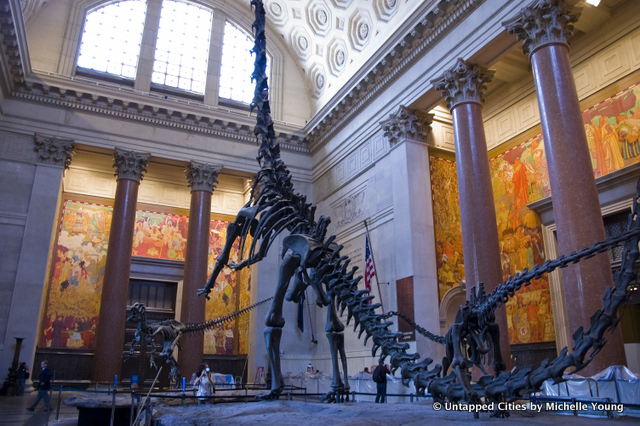
We see Sally Draper start to grow up and become her own character in Season 5, especially in the episode when she convinces Glen to ditch school to visit her in the city and they cross the park to check out the dioramas in the American Museum of Natural History. We went behind the scenes at the museum with artist Jack Cesareo, who told us all about the way those dioramas are created and uncovered a little-known fact about the newly restored murals in the Theodore Roosevelt Rotunda: one of the diplomats depicted in the mural of the Treaty of Portsmouth is Vladimir Nabokov’s uncle Konstantin. Vladimir Nabokov worked as a lepidopterist in the museum when he was young. The Museum of Natural History is so ingrained in the fabric of New York City, it’s no wonder it was featured in Mad Men.
Have a look at the actual sets from Mad Men in the Museum of the Moving Image exhibit, Matthew Weiner’s Mad Men.
These are just some of our favorite locations featured on Mad Men. Let us know what other places you would add to our Mad Men Guide to New York City! Get in touch with the author @lauraitzkowitz.





